(Above) The seventh-annual Celebration of Culture, a partnership between The Salvation Army and Indigenous Pathways, was held at Northridge Community Church in Aurora, Ont., in September. From left, Kenneth Wallace (African American Choctaw Pawnee); Adrian Jacobs (Haudenosaunee); Commissioner Susan McMillan, assistant secretary for mission; Mjr Shari Russell (Saulteaux), seconded to NAIITS: An Indigenous Learning Community; Jonathan Maracle (Mohawk); Cpt Crystal Porter (Euro Canadian and Mi’kmaq); Lt-Col Brian Armstrong, divisional commander, Ont. Div.; Lt-Col Lynn Armstrong, divisional officer personnel secretary and divisional secretary for spiritual life development, Ont. Div. (Photos: Jerimi Jones)
The Celebration of Culture came to Ontario this year for a day of learning, feasting and dancing on the journey of reconciliation. The seventh-annual event, a partnership between The Salvation Army and Indigenous Pathways, was held at Northridge Community Church in Aurora, Ont., on Saturday, September 20.
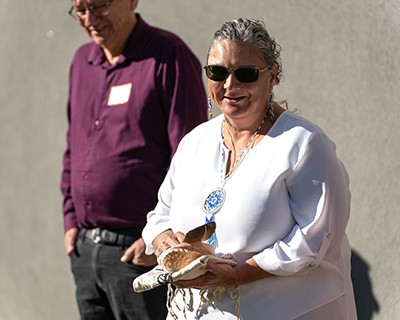
ceremony—a prayer of cleansing—to start the day
“We wanted to expand our reach and offer a reconciliation learning day for people who weren't able to travel to Pine Lake Camp in Alberta,” says Captain Crystal Porter (Euro Canadian and Mi’kmaq), territorial Indigenous ministries consultant. It was a different format this year, with traditional knowledge sharing, conversation circles and an evening concert.
“It’s important to create spaces across the territory where people feel welcome to learn what reconciliation means in their context, and to laugh, celebrate and walk together in new ways,” Captain Porter adds.
The learning began as participants formed a circle outside, and Captain Porter shared a land acknowledgment, recognizing that participants were gathered on Anishinaabe lands, and the traditional and treaty territory of the Chippewas of Georgina Island—the closest First Nation community to Aurora. Then Major Shari Russell (Saulteaux), who has been seconded to NAIITS: An Indigenous Learning Community, led a smudging ceremony—a prayer of cleansing—to start the day.
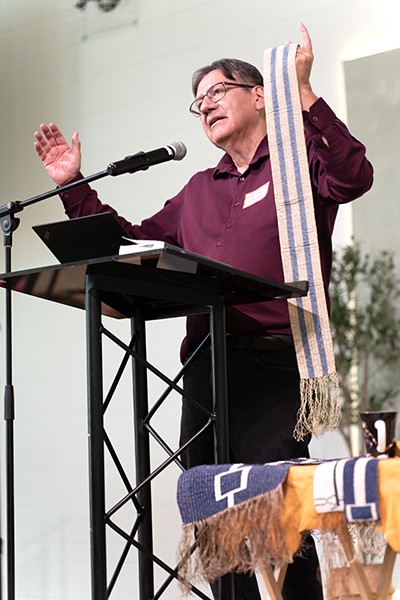
The morning continued with teaching from Adrian Jacobs (Haudenosaunee) on wampum belts. Woven in intricate patterns from beads made of seashells, wampum belts record history and mark agreements between peoples.
“This was our library,” said Jacobs, displaying a replica of the Hiawatha Belt. The belt tells the story of the founding of the Haudenosaunee Confederacy, when a Peacemaker, sent by the Creator, brought five warring nations together to live in peace. The Dish With One Spoon Wampum represents the concept of sharing land and resources and preserving them for future generations.
The Two Row Wampum marks the foundational treaty between the Haudenosaunee and the first European settlers, with two purple rows symbolizing that they would travel together on the river of life in peace, friendship and respect, but without crossing paths or interfering with the other.
“This is what treaty is to us—it’s about relationship, not land,” says Jacobs.
“What would our country be like if we actually lived the Two Row Wampum teaching?” asked Dani Trottier, who attended the Celebration of Culture along with her parents, Captains Lynnette and Matthew Trottier, during the discussion time after the session.
At lunch, participants were treated to new flavours—Three Sisters soup, bison chili, bannock with maple butter, and cedar tea—catered by Indigenous entrepreneur Candace Esquimaux (Anishinaabe). They also had the chance to view and purchase beaded jewelry by guest Kenneth Wallace (African American Choctaw Pawnee).
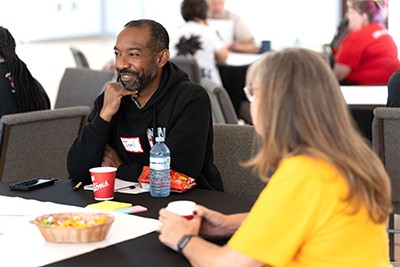
In the afternoon, Jacobs led a second teaching session on incarnational missiology, exploring the intersection of faith and culture, and how Indigenous theologians have needed to disentangle the gospel from its cultural package.
“That’s the Jesus that came to us—European Jesus. A blonde-haired, blue-eyed white man. That’s what came with the churches,” says Jacobs. “We should be able to share the message of the gospel in such a way that everybody in the world can receive and take in Jesus as one of them.”
Commissioner Susan McMillan, assistant secretary for mission, resonated with this understanding. “I’ve always been interested in Indigenous expressions of Christianity—seeing Jesus with different faces,” she says, recalling the time she spent in South America.
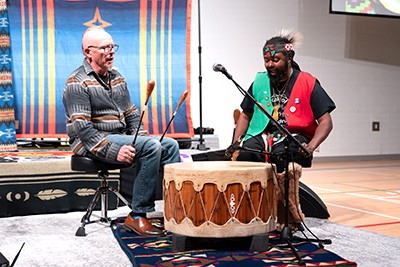
Theresa Treadwell, knowledge mobilization and implementation specialist in the social mission department, lives close to the Chippewa people of Georgina Island, where she has attended many educational and cultural events. But the Celebration of Culture has added a new layer of meaning.
“This is the first time I’ve ever experienced the gospel being shared at the same time,” she says. “Hearing how Indigenous creation stories prepared people for the gospel really moved me. It’s wonderful to see God at work in ways you might not have understood before.”
Listening and learning is a lifelong journey, says Captain Joyce Downer, divisional youth secretary in the Ontario Division. “I think Indigenous teaching is reframing my understanding of who God is, my relationship with the rest of creation, the created and the Creator,” she says.
In the evening, Jonathan Maracle (Mohawk), founder and lead singer of the music group Broken Walls, performed a concert and shared some of his own journey to reclaim his Indigenous identity as a follower of Christ. He was accompanied by Kenneth Wallace on the drum, who also joyfully led the audience to leave their seats and join in a dance around the room.
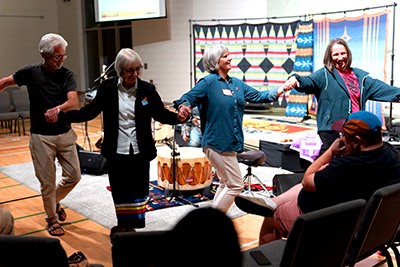
From left, Mjr David Ivany, Commissioner Susan McMillan,
Claire Dunmore and Cpt Joyce Downer
For Joel Gordon, director of ministry partnership and innovation for the Evangelical Fellowship of Canada, the Celebration of Culture offered a chance to deepen relationships after meeting Maracle through other reconciliation efforts.
“Learning more about wampum belts from Adrian had a deep and personal connection for me, because I was gifted a wampum bead bracelet by Jonathan Maracle a few months ago, as a symbol of our friendship,” he says. “Now I’m able to connect 800 years of history with a person I’m on a journey of sharing and learning with. For me, reconciliation is being sparked one friendship at a time.”
For my photos, see our Facebook album.
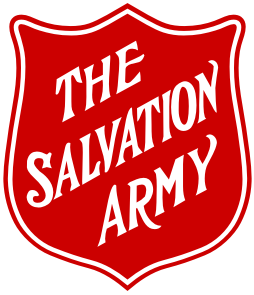
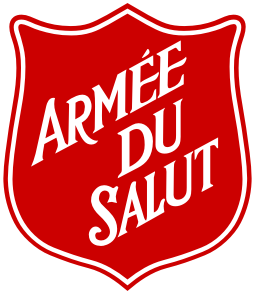


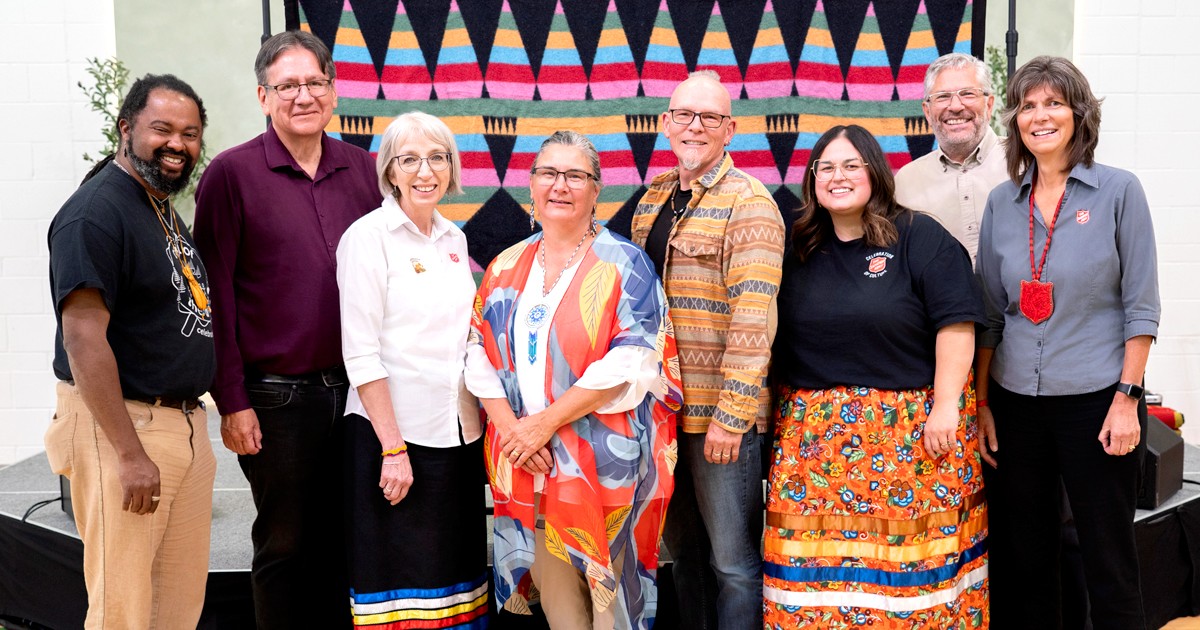
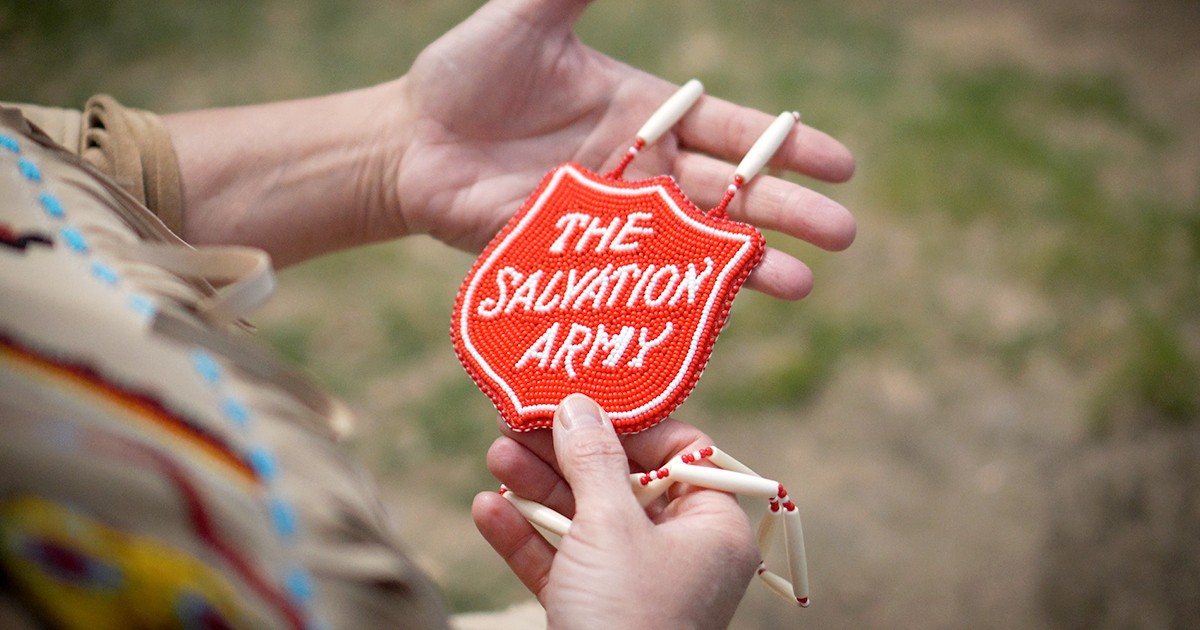
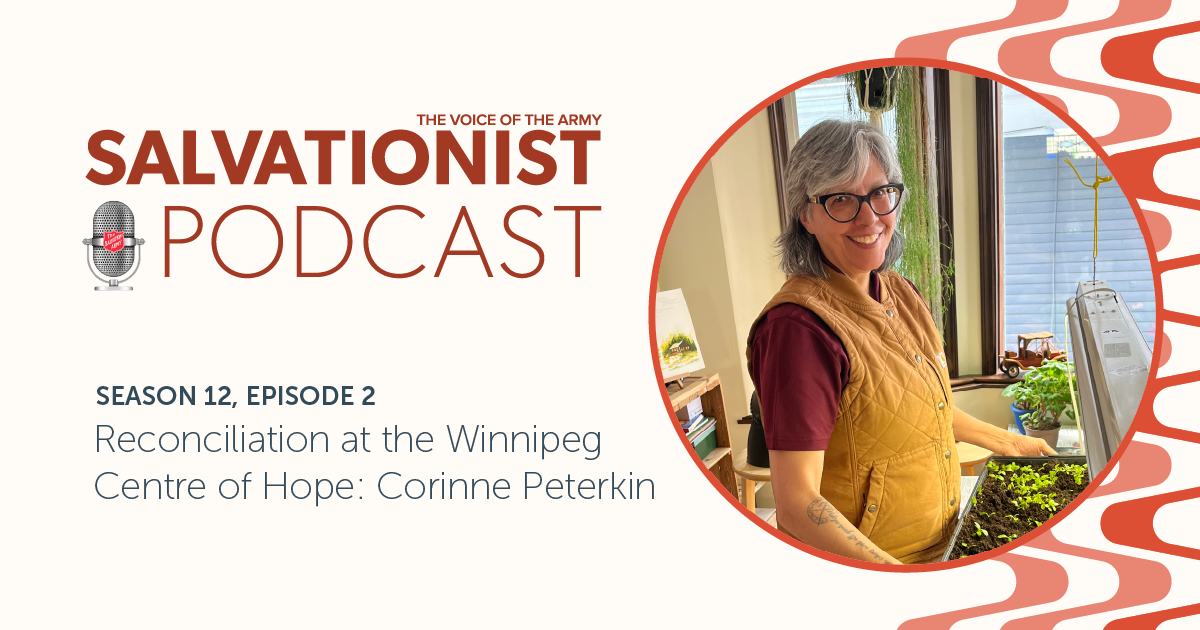
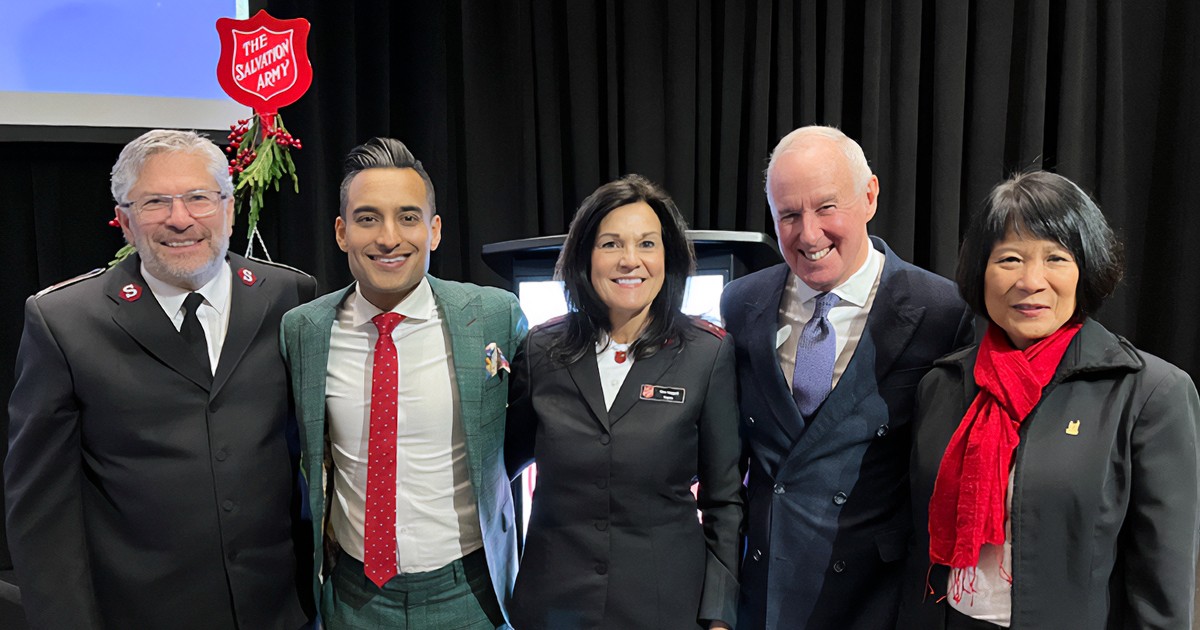


Leave a Comment